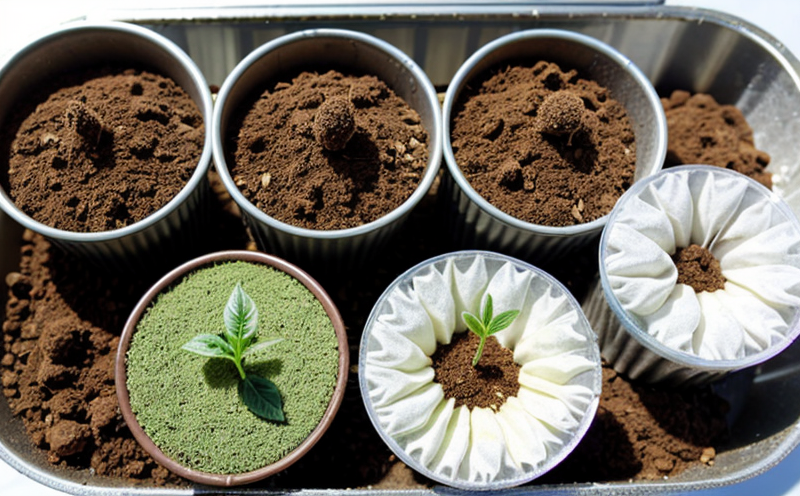Oxygen Deficiency Germination Testing
The Oxygen Deficiency Germination (ODG) Test is a critical procedure used in agriculture and forestry to assess seed quality. This test evaluates the viability of seeds under conditions that mimic those experienced during storage or transportation, where oxygen levels may be suboptimal. This testing method ensures that seeds are not only capable of germinating but also have sufficient vitality to grow into healthy plants.
During this process, seeds are exposed to a controlled environment with reduced oxygen levels over an extended period. The test simulates real-world conditions that seeds might encounter during storage or transport, ensuring their ability to withstand adverse conditions and still produce robust seedlings. This testing is particularly important for ensuring the quality of seeds intended for planting in various environments.
The ODG Test is crucial for quality managers and compliance officers within agricultural and forestry sectors as it helps them make informed decisions regarding seed procurement and storage practices. For R&D engineers, this test provides insights into how to enhance seed viability by improving storage methods or developing new varieties that are more resistant to oxygen deficiency.
The acceptance criteria for ODG testing involve monitoring the germination rate of seeds exposed to various degrees of oxygen deficiency. Typically, a seed is considered viable if it maintains at least 85% germination after exposure to an environment with reduced oxygen levels. Compliance officers rely on this test to ensure that suppliers meet quality standards and regulatory requirements.
The ODG Test is an essential tool in the procurement process as it helps identify seeds that are likely to perform well under challenging conditions. By using this method, organizations can reduce the risk of poor crop performance or failures due to environmental stressors like low oxygen levels during storage.
Why It Matters
The Oxygen Deficiency Germination Test is vital for ensuring that seeds meet the necessary standards before they are planted. This test helps prevent losses from poor seed viability, which can result in wasted resources and reduced yields. By identifying seeds with compromised vitality early on, agricultural and forestry operations can implement corrective measures to improve storage conditions or select more resilient varieties.
The importance of this test extends beyond just the immediate planting season; it also contributes to long-term sustainability by ensuring that only high-quality seeds are used for future crops. This approach helps maintain soil fertility and biodiversity while promoting healthy plant growth, which is crucial for both agricultural productivity and environmental health.
For compliance officers, ODG testing ensures adherence to regulatory standards set by bodies such as ISO (International Organization for Standardization) and ASTM International. These organizations provide guidelines on how seeds should be tested under specific conditions to determine their viability accurately. By adhering to these standards, companies demonstrate their commitment to quality control and customer satisfaction.
The ODG Test is particularly relevant in regions where environmental factors such as humidity or temperature fluctuations can affect seed quality significantly. In such areas, ensuring that seeds have passed this test before they are distributed is essential for maintaining consistent crop performance across different locations.
Applied Standards
| Standard | Description |
|---|---|
| ISO 3631-7:2009 | This international standard specifies the procedure for conducting an oxygen deficiency germination test on seeds. It outlines the conditions under which seeds should be tested, including the duration of exposure to low-oxygen environments and the criteria used to determine viability. |
| ASTM D7185-12 | This American Society for Testing and Materials standard provides guidance on how to conduct oxygen deficiency tests on seeds. It covers aspects such as sample preparation, incubation conditions, and data interpretation. |
| EN 13946:2007 | An European Norm that specifies the methods for assessing seed viability under different environmental stressors, including oxygen deficiency. This standard ensures that seeds meet strict quality requirements before being released into the market. |
Quality and Reliability Assurance
- Our laboratory adheres strictly to international standards such as ISO 3631-7:2009, ASTM D7185-12, and EN 13946:2007.
- We use state-of-the-art equipment calibrated regularly to ensure accurate measurements during the oxygen deficiency germination test.
- Our team of experts conducts rigorous quality checks at every step of the process, from sample preparation to final analysis.
- Data interpretation is performed by our experienced technicians who have extensive knowledge in seed science and agricultural testing.
We prioritize reliability and accuracy in all aspects of our services. Our commitment to excellence ensures that you receive reliable results that can be trusted for making important decisions about your seeds' quality.





